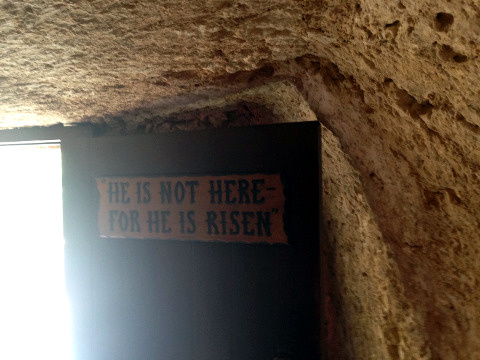
A quiet Easter
|
Getting your Trinity Audio player ready...
|
I used to call Easter Sunday a “Tah-Dah” Sunday. Churches will go all out this Sunday, adorning the sanctuary with lilies, scheduling the best soloists, even bringing in extra instruments for the orchestra. The television will carry ads for the churches that can afford to advertise their special service. Easter is an exciting Sunday, with big crowds, big programs, and lots of energy and focus. I have fond memories of a full choir singing Handel’s Hallelujah Chorus.
As a pastor’s wife, Easter Sunday often meant extra work and extra effort for me. We wanted to be the church that the “P and L people” chose to attend. In church work, “P and L” means “poinsettia and lily” and is a nickname for those who only choose to attend church on Christmas and Easter. Looking back, I wonder why we did that. I guess the hope was to reach out to those with a marginal interest in their faith, hoping that we could convince them to be more committed to Christ. Truthfully, that rarely worked. Traditionally, some of the lowest Sunday attendance occurred the Sundays after Easter and Christmas.
Why do people choose to go to church on special holidays, but not during the rest of the year? Have we somehow taught that church attendance is what pleases or even pacifies God? Easter isn’t about a Sunday service; it is about a blood-stained cross and an empty tomb. Easter isn’t about the loud “Tah-Dah” at the end of a glorious worship service. Instead, Easter is about a quiet sunrise that marked a new beginning.
Easter is about Mary and the other grieving women who walked quietly to the tomb early that morning. They were startled to see the stone had been rolled away. Their grief was soon replaced by wonder and joy when the angel told the women, “Do not be afraid, for I know that you seek Jesus who was crucified. He is not here, for he has risen, as he said” (Matthew 28:5–6).
Easter Sunday is about that moment. How do we teach, preach and express the amazement and awe of that quiet moment of discovery? It wasn’t a “Tah-Dah” moment. That moment was about quiet, reverent awe. I don’t think a person can experience Easter unless he or she can experience the quiet wonder of the empty tomb. That would be my challenge to pastors, teachers, and other church leaders this week. How do you make this Sunday about reverent awe and gratitude?
I love amazing hymns, choral anthems, and songs of praise. I love the Easter crowds and the air of excitement in an Easter worship service. Even as I type those words, I am aware that those moments were never really my Easter celebration. My Easter “moment” usually occurred at the Maundy Thursday service when I realized all that Jesus endured to provide my salvation.
I believe that God would love for us to set aside time and focus in order to kneel before the empty tomb, in quiet wonder and reverent awe. God would love for us to see the blood-stained burial cloth – lying flattened and empty of the body of Christ. God would encourage us to hear the angel say, “Don’t be afraid—Jesus is risen.” God would ask each of us who truly celebrate Easter to do so with humble, tear-filled gratitude. The empty tomb of Christ means that you and I will be resurrected one day too. Easter means we are saved.
I hope you will enjoy your Easter service this week. But, I would like to encourage all of us to find some time before Sunday to be alone with our Creator God, at the empty tomb. Easter is about God’s overwhelming love for each of us. He gave himself so that you and I could spend eternity with him. We are adored by the God of the universe and saved by the blood of his Son.
That is our quiet, reverent, whispered Easter . . . “Tah-Dah!”
Join us at www.christianparenting.org and chime in on this week’s discussion question: Do your kids wonder how a Father who sacrifices his Son can be called good? What do you tell them?
